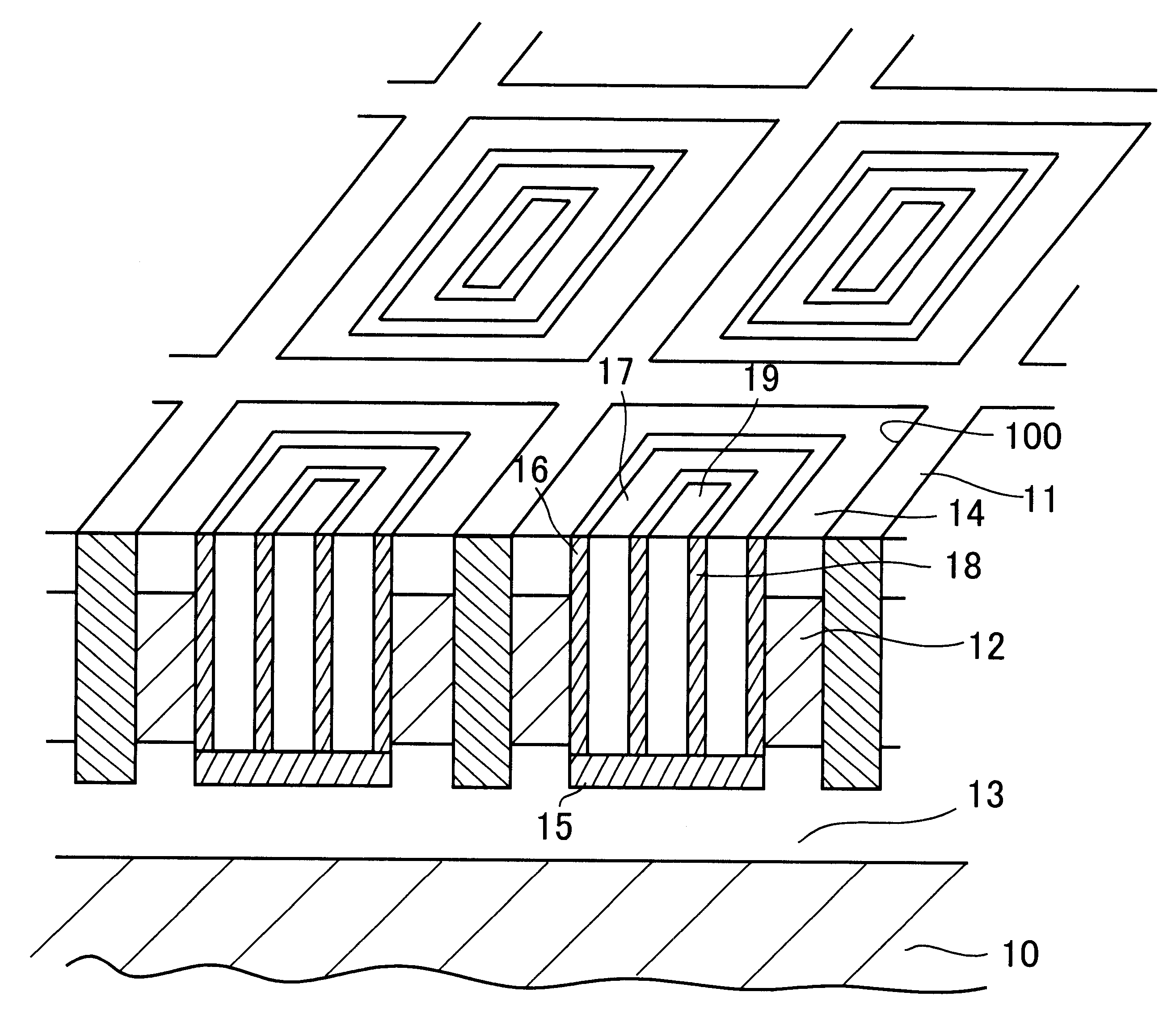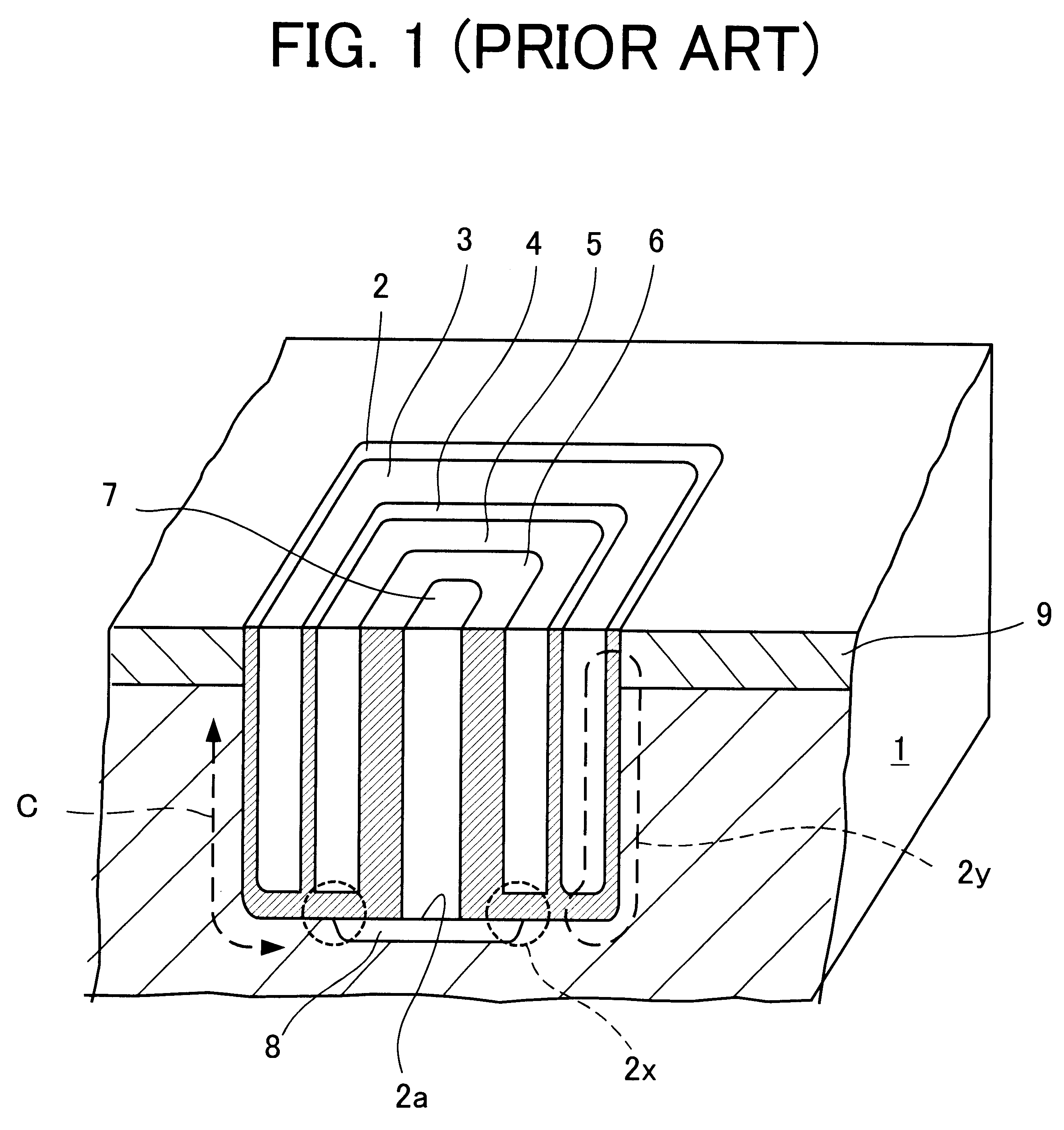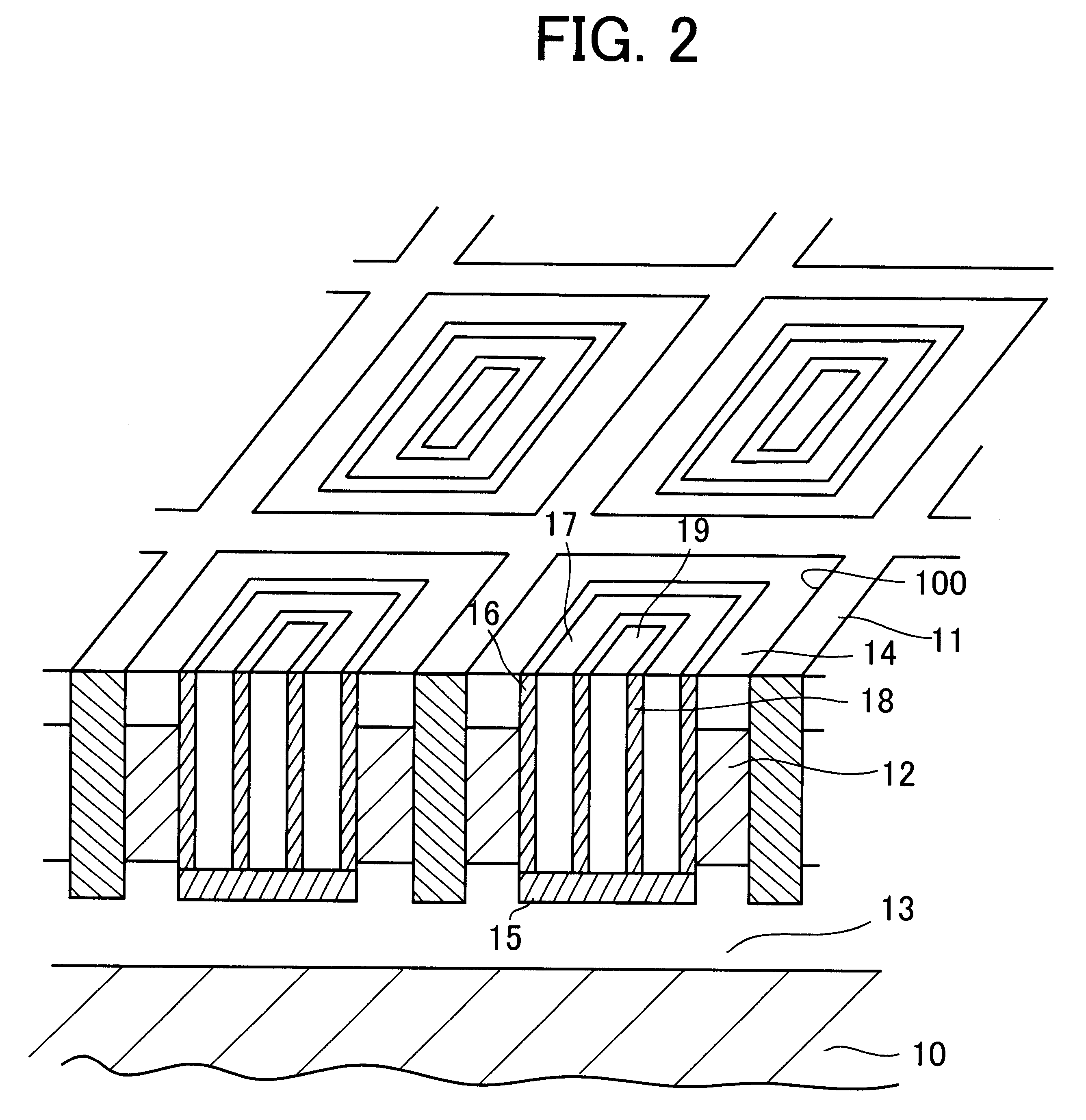Non-volatile memory and method for fabricating the same
- Summary
- Abstract
- Description
- Claims
- Application Information
AI Technical Summary
Benefits of technology
Problems solved by technology
Method used
Image
Examples
first preferred embodiment
FIG. 2 shows a part of a non-volatile memory according to a first preferred embodiment of the present invention. The non-volatile memory includes a p-type of silicon substrate 10, on which cell-isolating insulation layers 11 are formed in matrix to separate a plurality of memory cells. Each region or cavity 100 segmented by the cell-isolating insulation layers 11 is designed to have inside walls provided with active regions 12, which is a part of the p-type silicon substrate 10. The memory further includes a common source region 13 formed on the silicon substrate 10 under the active regions 12. In the common source region 13, high density n+ ions are implanted. A drain region 14 is formed on the active regions 12. In the drain region 14, n-ions are implanted. The common source region 13, active regions 12 and drain region 14 form a channel for a transistor, which is used for storing data.
A gate insulating layer 16 is formed on an inside surface of the active regions 12, which is sha...
second preferred embodiment
FIG. 4 shows a non-volatile memory according to a second preferred embodiment of the present invention, in which the same or corresponding elements or components to those in the first preferred embodiment, shown in FIG. 2, are represented by the same reference symbols. The differences from the non-volatile memory according to the first preferred embodiment, shown in FIG. 2, is the structure of floating gate electrode and control gate electrode.
A non-volatile memory according to the second preferred embodiment includes a p-type of silicon substrate 10, on which cell-isolating insulation layers 11 are formed in matrix to separate a plurality of memory cells. Each region segmented by the cell-isolating insulation layers 11 is designed to have inside walls provided with active regions 12, which is a part of the p-type silicon substrate 10. The memory further includes a common source region 13 formed on the silicon substrate 10 under the active regions 12. In the common source region 13,...
third preferred embodiment
FIG. 5 shows a non-volatile memory according to a third preferred embodiment of the present invention. The non-volatile memory includes a p-type silicon substrate 20 and pillar shape of active regions 21 formed on the silicon substrate 20. The active regions 21 are arranged in the orthogonal two directions with predetermined intervals. The non-volatile memory further includes a common source region 22 formed under the active regions 21 on the silicon substrate 20. The common source region 22 is formed by implanting n+ ions. A drain region 23 is formed on the active region 21 by implanting n-ions.
An insulating layer 24 is formed on the surface of the silicon substrate 20 except the active regions 21. The active region 21 is provided at an outer side surface with a gate insulating layer 25. The gate insulating layer 25 is arranged to surround the active region 21. A floating gate electrode is formed on a side surface of the gate insulating layer 25. An inter-gate insulating layer 27 i...
PUM
 Login to View More
Login to View More Abstract
Description
Claims
Application Information
 Login to View More
Login to View More - R&D
- Intellectual Property
- Life Sciences
- Materials
- Tech Scout
- Unparalleled Data Quality
- Higher Quality Content
- 60% Fewer Hallucinations
Browse by: Latest US Patents, China's latest patents, Technical Efficacy Thesaurus, Application Domain, Technology Topic, Popular Technical Reports.
© 2025 PatSnap. All rights reserved.Legal|Privacy policy|Modern Slavery Act Transparency Statement|Sitemap|About US| Contact US: help@patsnap.com



